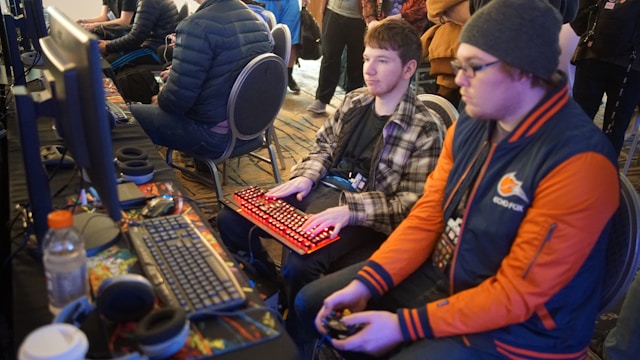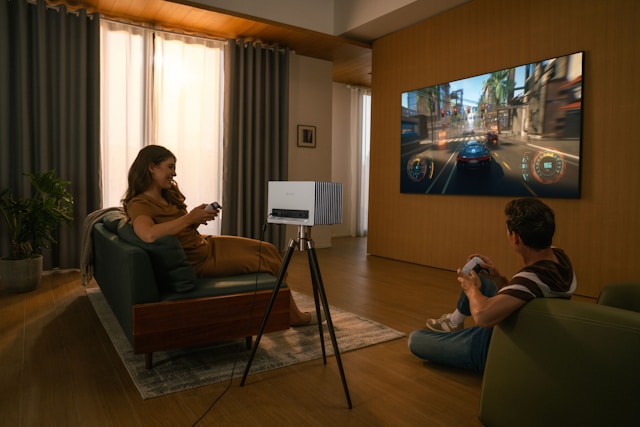Video games are everywhere. From handheld consoles and phone apps to immersive gaming systems and virtual reality, gaming is now woven into daily life for kids, teens, and adults alike. For many, gaming provides problem-solving challenges, creative outlets, and social connection. It can even be a healthy stress reliever after a long day. On the other hand, you can develop a video game addiction.
When gaming starts to dominate time, energy, and attention, crowding out school, work, sleep, relationships, or self-care, it may shift into what some call “video game addiction.” Others use terms like “problematic gaming” or “behavioral addiction.” The word matters less than the impact. If gaming is interfering with everyday functioning and well-being, it is worth addressing.
Seeking therapy for separation anxiety?
Contact us today for an appointment.
What Does Problematic Gaming Look Like and How Does It Affect People?
Problematic gaming is not defined by hours alone. It shows up when life feels off balance, when responsibilities are neglected, or when emotions feel tied to whether or not someone can play. The signs look different at different ages.
- In children: A child might sneak a tablet under the covers at night and show up to school exhausted. They may refuse to join in activities they once enjoyed, complain of headaches or stomachaches, or lash out when screen time is limited.
- In teens: Gaming can become the primary social outlet, replacing in-person friendships and activities. Teens may skip meals, stay up late gaming with friends in different time zones, or fall behind in schoolwork. They may also become secretive about how much they play, worried about judgment.
- In adults: Many adults start gaming as a way to relax after work. Over time, it can take over evenings, disrupt sleep, and strain relationships. Some adults hide how much they play, feeling ashamed, while others feel defensive when loved ones raise concerns.
The impact often extends beyond the individual. Parents may argue about limits. Partners may feel disconnected. Children may feel overlooked if a parent is constantly gaming. These ripple effects are often as important as the gaming itself.
Why Does Video Game Addiction Happen?
Problematic gaming usually develops for understandable reasons. It is not about weakness or laziness. Games are designed to keep players hooked, and they tap into universal human needs.
- The science of reward loops: Many games use variable reward systems, where players never know exactly when they will “level up” or get the next prize. This is the same principle behind slot machines, and it keeps people playing longer than intended. Add achievements, leaderboards, and daily challenges, and it becomes clear why stopping is so difficult.
- Stress and escape: Gaming can provide a safe distraction from school stress, job demands, or relationship tension. A Palo Alto teen under intense academic pressure may use gaming as their only outlet. An adult in a high-stress Silicon Valley job may find relief in gaming’s sense of control and progress.
- Neurodivergence: Children and adults with ADHD, autism, or sensory differences may find gaming especially appealing. Games often provide structure, stimulation, and clear rules, qualities that feel predictable compared to the uncertainty of real life.
- Age and stage of life: Teens often use gaming to maintain friendships, while adults may use it to decompress. Each stage brings unique vulnerabilities when balance is lost.
- Environmental factors: In tech-saturated communities like the Bay Area, families sometimes see gaming as a stepping stone to careers in coding, design, or esports. This can make it harder to know when interest is healthy and when it has become problematic.
Understanding these factors helps shift the conversation from blame to compassion.
Different Types of Games, Different Impacts
Not all games are the same, and acknowledging this helps families have more nuanced conversations.
- Quick mobile games provide short bursts of entertainment but can be habit-forming due to constant notifications and rewards.
- Immersive VR games offer a heightened sense of presence and escape, which can be both thrilling and difficult to disengage from.
- Competitive online games like shooters or esports titles foster teamwork and community but can lead to longer sessions and performance pressure.
- Educational and creative games can encourage learning, exploration, and innovation, often blending fun with skill-building.
By distinguishing types of games, families can better evaluate which are enriching and which may be more prone to overuse.
The Benefits of Gaming and the Importance of Balance
It is equally important to recognize the benefits of gaming. Therapy and parenting are not about demonizing games but about ensuring they are part of a balanced life.
- Cognitive benefits: Games encourage problem-solving, critical thinking, and creativity. Puzzle and strategy games build persistence. Adventure and exploration games promote resourcefulness. Sandbox games can spark imagination and innovation.
- Emotional benefits: Gaming offers stress relief and a sense of mastery. For children, completing a level can boost confidence. For adults, gaming can provide a much-needed break from the pressures of work or caregiving.
- Social benefits: Online multiplayer games allow players to connect with friends across the globe. For teens who struggle with in-person interactions, gaming communities can provide belonging and identity. For adults, gaming may be a way to maintain friendships across busy schedules.
- Creative expression: Games like Minecraft, Roblox, or VR creation platforms allow players to build, design, and experiment. These skills can translate into real-world creativity.
Balance means gaming remains one piece of a varied life. Families can set agreed-upon schedules, mix gaming with outdoor activities, and encourage conversations that place gaming alongside other meaningful pursuits.
How Therapy Helps
Therapy focuses on understanding why gaming has become central and helping individuals and families build healthier patterns.
- For children: Therapists use play therapy and CBT to help kids connect feelings with behaviors. For example, a child who games when anxious about school might learn to express that fear and use calming techniques instead. Therapists may also work with families to create structured routines for homework, physical play, and gaming.
- For teens: CBT helps teens reframe unhelpful thoughts like “gaming is the only place I belong.” Therapists introduce practical tools such as setting timers, developing offline friendships, or managing stress through mindfulness and exercise.
- For adults: Therapy often addresses stress management and communication. A therapist might help an adult replace late-night gaming with a healthier bedtime routine or guide conversations with partners about shared expectations.
- For families: Family therapy reduces conflict by helping parents set consistent, reasonable rules. It also encourages positive alternatives, such as shared meals, outings, or collaborative projects that bring families together.
Therapy is tailored to each person and family. The goal is not to eliminate gaming but to integrate it into a balanced, meaningful life.
Realistic Alternatives and Success Stories
Therapy often helps families move beyond “stop gaming” toward “what else can work?” Some examples:
- A teen who stays up all night playing competitive shooters may transition part of that time into online chess, which still provides competition but allows for shorter, more focused play.
- A family might create a weekly “family game night” where parents join in video games, then shift to board games or outdoor play. This reframes gaming as a shared, balanced activity rather than an isolated one.
- An adult working in tech can build a new evening routine: exercise after work, dinner with their partner, then a set gaming window before winding down with reading. This reduces late-night marathons while keeping gaming enjoyable.
Stories like these highlight that balance is possible and realistic.
Video games are here to stay. They can provide joy, creativity, and connection, but they can also become overwhelming if left unchecked. Therapy helps kids, teens, adults, and families build resilience, strengthen relationships, and restore balance so gaming remains a source of enrichment rather than stress.
Do you want to learn more about how we can help you find balance? Contact us today to book an appointment with one of our Menlo Park, Palo Alto or San Jose therapists.




